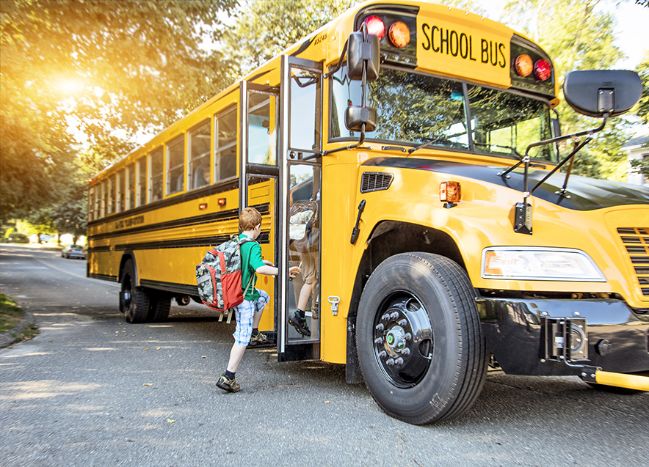As school districts nationwide gradually reopen in the face of uncertainties caused by the COVID-19 pandemic, this is a back-to-school season unlike any in our lifetimes. For schools pursuing in-person instruction or a hybrid model of remote and in-school, a central concern is making sure school facilities are as safe as possible.
Contact with respiratory droplets when an infected person coughs or sneezes is considered the primary way the virus spreads. However, contact with hard surfaces remains a key risk factor. That’s because the coronavirus is believed to survive on surfaces for several hours. When students or staff members touch contaminated surfaces, then touch their nose, mouth, or eyes, they can become infected. This makes commonly touched surfaces a major potential source of viral spread.
The importance of surface disinfection
The good news is that simple disinfectants are effective at killing the virus. A recently released report from the World Health Organization (WHO) and Unicef on COVID-19 prevention and control in schools underscored the importance of disinfection. In its guidelines, the report urged school leaders and staff to “Clean and disinfect school buildings, classrooms and especially water and sanitation facilities at least once a day, particularly surfaces that are touched by many people.”
Objects and surfaces of particular importance in school disinfection may include the following:
• Door knobs and handles
• Stair rails
• Classroom desks and chairs
• Lunchroom tables and chairs
• Countertops
• Handrails
• Light switches
• Handles on equipment (e.g. athletic equipment)
• Pushbuttons on vending machines and elevators
• Shared toys
• Shared remote controls
• Shared telephones
• Shared desktops
• Shared computer keyboards and mice
• Bus seats and handrails
The WHO/Unicef report also recommends a specific disinfectant to use in schools: “Use sodium hypochlorite at 0.5% (equivalent to 5000ppm) for disinfecting surfaces and 70% ethyl alcohol for disinfection of small items, and ensure appropriate equipment for cleaning staff.”1
A novel idea: Produce your own disinfectant
As anyone who has visited a pharmacy during the pandemic knows, traditional sanitizing agents have been in short supply for months. When they are available, suppliers have often responded to the supply/demand dynamics with unwarranted price increases. For school districts, this poses a significant unplanned expense. In addition, some common disinfectants contain stabilizers like caustic soda that can damage surfaces or leave a residue. And, with school districts increasingly concerned about their environmental sustainability, the prospect of generating a new waste stream of plastic disinfectant packaging is something to be avoided.
Fortunately, there is an alternative for safe, efficient and sustainable sodium hypochlorite production. Schools can produce their own sodium hypochlorite right on site using a De Nora ClorTec®-SD. This compact, simple and fully automatic system produces up to 30 gallons of sodium hypochlorite per day, at the correct concentration for use – no dilution needed. The solution produced can be used without any stabilizers or other additives which could harm surfaces or leave residues. And it is user-safe, it is not classified as hazardous or corrosive at the concentration produced.
The ClorTec®-SD is about the size of a residential water softener, so it fits almost anywhere. Simply fill the integrated salt storage tank with a few bags of salt, connect a water supply, plug it in, and turn it on to start producing the solution. With a full salt storage tank, the unit can run six to eight weeks without refilling. This eliminates the need to devote storage space to chemicals. The compact footprint and simple operation make the ClorTec®-SD system ideal for schools, as well as for outside cleaning and sanitation contractors.
Simple, natural, safe, and sustainable
The ClorTec®-SD produces sodium hypochlorite using just three simple ingredients: salt, water and electricity. So there are no toxic chemicals to deal with. The sodium hypochlorite produced by the unit is stored in a tank and schools can add dispensers to fill spray bottles. With continuous production there is no need to store chemicals and create waste with plastic packaging. It can even play a role in the curriculum, providing students with a concrete example of environmentally sustainable technology addressing a critical need.
Our children and school staffs deserve the best protection strategies during this unprecedented pandemic challenge. Implementing robust cleaning protocols and producing effective sanitizing right within each school can play an important role in mitigating risk as schools adjust to the “new normal” —while positioning themselves for improved sanitation in a post-pandemic world.
Learn more at https://www.denora.com/products/applications/Surface-Disinfection/ClorTec-SD.html

